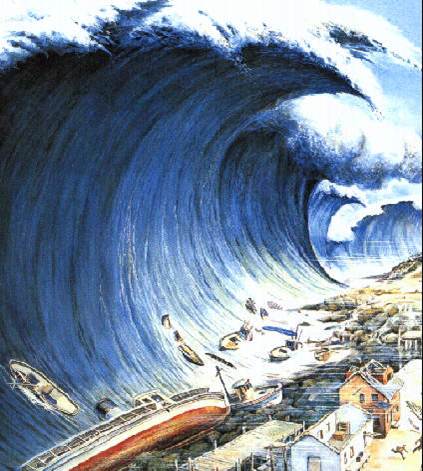How the Internet Set Direct Marketing Back Twenty Years
I used to get a kick out of the definition of "innovation" when the internet marketing era really started taking off about 15 years ago. The internet made it easy for an entirely new generation of ambitious people to get into the marketing business - as either internal marketers or service providers. And guess what? They were incredibly industrious - quickly claiming fame to all kinds of new "innovations" like:
- Real-time customer and transaction databases
- Complex audience segmentation techniques
- ROI tracking and other advanced measurement techniques
- A/B Testing
- And the list goes on....

Actually, all of those things already existed before the internet in some form or another. The internet boom just made a lot of other people finally pay attention.
Actually, they weren't paying attention either. They had to "reinvent" all these things after pretty much making a mess of the internet during the first ten years of playing with it.
Yes, making a database was SO easy, they made HUNDREDS of them - and YOUR name was in ALL of them - TWICE. Yes, we had "junk mail" before 1998, but it never compared to what we were going to get with SPAM! And apparently, early online creative people were free to work without the burden of having to make anything attractive. It was the age of ugly creative if there ever w as one.
as one.
The privacy controls, anti-Spam measures (like CAN-SPAM legislation), anti-virus software, etc. are all a result of an industry that was playing like a kid with a handful of permanent markers sitting in front of the freshly painted wall in the hallway.
What Direct Marketers Already Knew Before "Online Marketing"
Since the 1960's much of what we now use as "best practices" in online marketing was already being tried and perfected in the Direct Marketing world. The 1981 publication of "Frontiers of Direct Marketing" by Lester Wunderman and the 1989 "Maxi-Marketing" book by Stan Rapp and Tom Collins laid out for everyone to learn how Direct Marketing was being done (and how it would continue to get done in the future).
done in the future).
To see the true fore-runners of what is now considered "best practice online marketing", look no further than the US catalog industry, led by Brands like L.L. Bean and Lands' End, which pioneered many of the advances we now associate with the modern internet marketer:
- Databases with real-time inventory tracking, backorder dates, customer transaction histories, etc.
- Advanced segmentation and creative differentiation - in one company resulting in 42 different variations of their catalog.
- Performance driven scoring and triggers - the best customers get ALL the catalogs, more infrequent customers see fewer of them.
- Advanced metrics that included "Sales
 Per Square Inch" (to justify how much space a product should get in the catalog) as well as 16-week dynamic inventory forecasting (16 weeks the assumed "life" of a catalog).
Per Square Inch" (to justify how much space a product should get in the catalog) as well as 16-week dynamic inventory forecasting (16 weeks the assumed "life" of a catalog). - Covers, inside covers, featured products, dot whacks, headlines, pricing, etc. were all subject to testing that was easily monitored using their advanced databases.
- Unconditional Guarantees? Sorry Zappos, that was already standard for almost 100 years (but Kudos to you for taking on the cost of return shipping).
And the list goes on...
"Borrow" vs. "Re-Invent"
For those of us looking to take on the brave new world of "X" Marketing (whatever "X" is at the moment you are reading this), we would do well to learn from some established best practices and not necessarily invest our entire business into re-inventing the wheel.
As I've delved into the world of Content Marketing and Inbound Marketing over the last year, I've had a number of times where I would find myself feeling a bit lost about learning to master all the new "tricks" out there that the world of online marketing has provided for us. But in most cases, there is a moment where it hits me and I say "Oh, this is just like Direct Marketing when we do A,B & C!"
Yes, online marketing has brought us some incredible innovations, and even if we like to think Direct Marketing gave us all the tools we ever need, the internet has made it possible to use them and expand them in ways that were never imagined AND see the results faster than ever before. BUT, we can save a lot of time and resources by taking a few moments to look for precedent and established practices that don't need "re-inventing".
Keep it simple. Borrow where you can. Focus on customers. Most of all, think like a Direct Marketer...
Have a challenge with your Marketing - under any of the names you call it? Feel free to Contact Us, or learn more about our services, starting with Direct Marketing!




